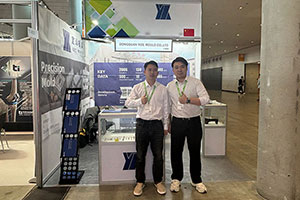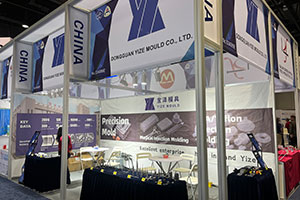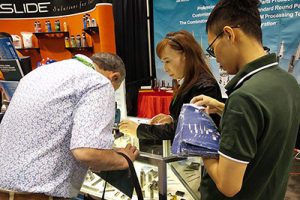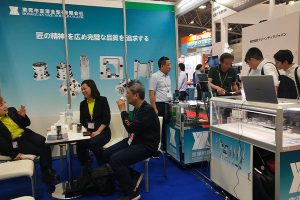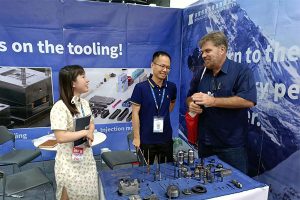The “Secret Weapon” for Performance Enhancement of Tungsten Carbide Molds
In the booming manufacturing industry, molds are like the “unsung heroes” behind the production lines and are the core tools for producing high-quality products. Among numerous mold materials, tungsten carbide […]
In the booming manufacturing industry, molds are like the “unsung heroes” behind the production lines and are the core tools for producing high-quality products. Among numerous mold materials, tungsten carbide molds hold a prominent position in the mold manufacturing field due to their high hardness, high strength, and excellent wear resistance. However, as modern industry places increasingly stringent requirements on product quality and production efficiency, the wear resistance of tungsten carbide molds is facing new challenges and urgently needs further improvement. At this juncture, wear-resistant coating technology shines like a beam of strong light. As an effective surface modification method, it has made a significant splash in the application on tungsten carbide molds, substantially enhancing their wear resistance and service life. Next, this article will provide a detailed analysis of the application of wear-resistant coatings on tungsten carbide molds from the aspects of coating types, preparation processes, performance advantages, and application cases.
I. Diverse Types of Wear-Resistant Coatings
Wear-resistant coatings are like a large “family” with a wide variety of members. Based on differences in composition and preparation methods, they can be classified into metal coatings, ceramic coatings, polymer coatings, etc. On the “stage” of tungsten carbide molds, there are mainly the following “star” coatings:
当社の工場事業:超硬部品、金型部品、医療用射出成形金型、精密射出成形金型、テフロンPFA射出成形、PFAチューブ継手。電子メール:[email protected],whatsapp:+8613302615729。
Carbide Coatings
Carbide coatings are true “tough guys” in the field of wear resistance, boasting extremely high hardness and excellent wear resistance. Examples include titanium carbide (TiC) and tungsten carbide (WC). These coatings can be precisely prepared on the surface of tungsten carbide molds through advanced methods such as Physical Vapor Deposition (PVD) and Chemical Vapor Deposition (CVD), providing the molds with a sturdy “armor” and significantly improving their wear resistance.
Nitride Coatings
Nitride coatings, such as titanium nitride (TiN) and chromium nitride (CrN), not only exhibit outstanding wear resistance but also possess good corrosion resistance. They can also “settle down” on the surface of tungsten carbide molds using PVD, CVD, and other methods, meeting the demanding requirements of specific working conditions.
Gradient Coatings
Gradient coatings are a unique type of multi-layer structured coatings. Their composition and properties change gradually in the thickness direction of the coating. By carefully designing a reasonable gradient structure, they can achieve a perfect bond with the substrate, effectively improving the wear resistance and thermal shock resistance of the coatings, enabling tungsten carbide molds to operate stably under complex working conditions.
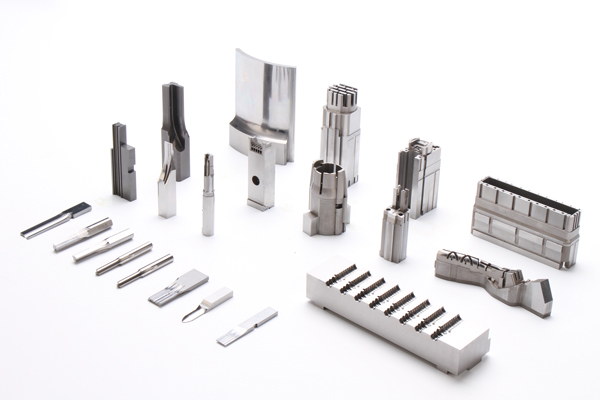
II. Preparation Processes of Wear-Resistant Coatings
The preparation processes of wear-resistant coatings are like “magic spells” wielded by a “magician,” playing a decisive role in the quality and performance of the coatings. Here are several common “magic tricks”:
Physical Vapor Deposition (PVD)
PVD is a fascinating technology that uses physical methods to evaporate or sputter coating materials onto the surface of the substrate. It can produce high-quality, high-hardness coatings, and the bond strength between the coating and the substrate is very strong. Common PVD techniques include vacuum evaporation, ion sputtering, and arc ion plating, each with its unique advantages and application scenarios.
Chemical Vapor Deposition (CVD)
CVD is a “chemical magic” that generates coatings on the substrate surface through chemical reactions. This technology can prepare coatings with excellent wear resistance and corrosion resistance. However, the CVD preparation process requires a high-temperature environment, which may have an impact on the performance of the substrate material and needs to be carefully considered in practical applications.
Thermal Spraying
Thermal spraying technology uses high-temperature flames or arcs to melt coating materials and spray them onto the substrate surface, similar to “spraying a protective paint” on the mold. It can prepare relatively thick coatings, but the bond strength between the coating and the substrate is relatively weak. Usually, post-treatment is required to improve the bond strength and ensure the stability and reliability of the coatings.
III. Outstanding Performance Advantages of Wear-Resistant Coatings on Tungsten Carbide Molds
The application of wear-resistant coatings on tungsten carbide molds is like injecting a powerful “energy boost” into the molds, bringing about numerous remarkable performance advantages:
Improved Wear Resistance
The high hardness and wear resistance of wear-resistant coatings act as a “wear-resistant shield” for tungsten carbide molds, effectively reducing the damage caused by friction and wear during the mold’s use, significantly extending the mold’s service life, and reducing the frequency and cost of mold replacement.
Enhanced Lubrication Performance
Some wear-resistant coatings also have excellent lubrication performance, acting like a layer of “lubricant” between the mold and the workpiece. They can reduce the friction coefficient between them, minimize friction heat and wear, and improve the mold’s working efficiency and stability, making the production process smoother.
Increased Corrosion Resistance
Nitride coatings, as representatives of some wear-resistant coatings, have good corrosion resistance. They can provide a “corrosion-resistant barrier” for tungsten carbide molds, protecting the molds from chemical corrosion and further extending the mold’s service life, ensuring that the molds can operate normally under various harsh environments.
Cost Reduction
By applying wear-resistant coatings, the frequency of tungsten carbide mold replacement and maintenance costs are significantly reduced, and production efficiency is greatly improved. This brings considerable economic benefits to enterprises and achieves the goal of cost reduction and efficiency enhancement.
IV. Typical Application Cases of Wear-Resistant Coatings on Tungsten Carbide Molds
The application of wear-resistant coatings on tungsten carbide molds has spread across multiple fields. Here are some representative application cases:
Automotive Manufacturing
In the complex process of automotive manufacturing, tungsten carbide molds are responsible for producing key components such as engine blocks and crankshafts. By applying wear-resistant coatings, the wear resistance and service life of the molds have been significantly improved, and production costs and maintenance costs have been greatly reduced, providing strong support for the high-quality development of the automotive manufacturing industry.
Electronic Manufacturing
In the electronic manufacturing field, where high precision is required, tungsten carbide molds are used to produce high-precision products such as semiconductor chips and integrated circuits. The application of wear-resistant coatings is like adding a “precise ruler” to the molds, improving their precision and stability, ensuring product quality and production efficiency, and meeting the high-quality product requirements of the electronic industry.
Plastic Molding
In the plastic molding field, tungsten carbide molds are used to produce various plastic products. The application of wear-resistant coatings effectively reduces mold wear and deformation, improves the dimensional accuracy and surface quality of plastic products, making the plastic products more aesthetically pleasing and practical and enhancing their market competitiveness.
V.結論と展望
The application of wear-resistant coatings on tungsten carbide molds is undoubtedly a “win-win” transformation. It has brought significant performance advantages to tungsten carbide molds, effectively improving their wear resistance, lubrication performance, corrosion resistance, and service life. With the continuous innovation and development of coating technology, the application prospects of wear-resistant coatings on tungsten carbide molds will be even broader. In the future, wear-resistant coating technology will move towards higher hardness, more excellent wear resistance, and greater environmental friendliness, injecting a continuous stream of impetus into the sustainable development of the manufacturing industry and writing a more glorious chapter.


